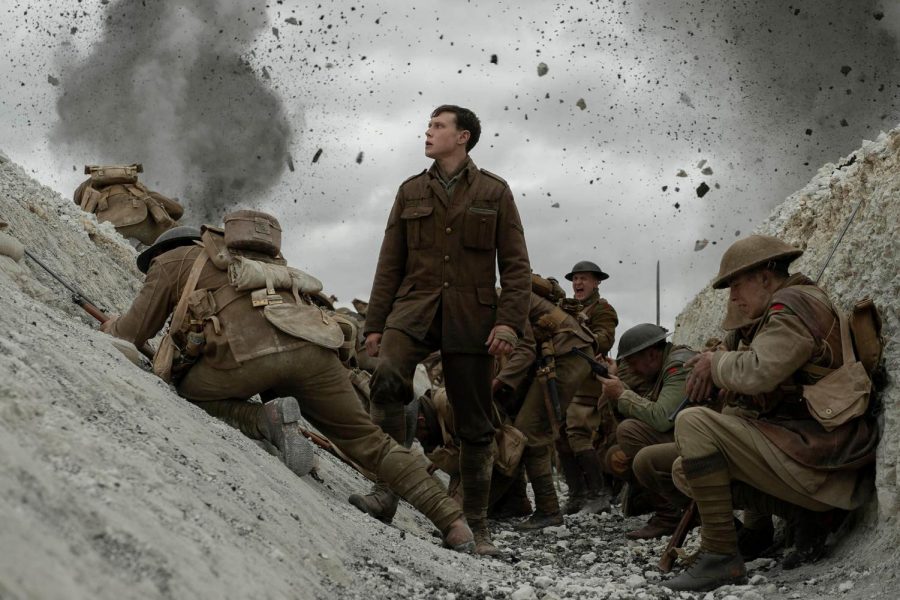Review: ‘1917’ is a nonstop ride of thrilling moments and excellent cinematography
January 23, 2020
Fifteen minutes. That’s around how long it takes for “1917,” Sam Mendes’ epic war film, to kick into high gear. After that point there are numerous gruesome, flat-out stressful, and tension-filled moments that make up the rest of the movie.
After watching, it’s not too hard to understand why the masterpiece is gaining global attention and massive award hype, winning Best Drama at the Golden Globes and Producers Guild of America Awards, and receiving a massive ten Oscar nominations.
Set all on April 6, 1917, the movie follows the story of two young British soldiers fighting in World War I against the Germans. The mission they’re given: cross through dangerous enemy lines to deliver a message to stop 1,600 men, including one of the soldier’s brothers, from attacking and falling right into a trap. The two men must survive an unforgiving terrain, and be on guard in the case of an enemy attack.
There are multiple elements that go into making this movie the ultimate triumph that it ends up being. But one major element that makes it so unique is the one-shot cinematography that stays in place throughout the entire film. Somehow they were able to weave the story together in a fashion that made it appear to be all one take, and oh my goodness it’s wild.
In the beginning, all I could think about was how the shots were never cutting. Later in the film, however, the action picks up and that aspect stops only being a cool gimmick, and starts to build tension. It provides some of the most absurd shots in any movie, this year or otherwise.
Because of the real-time playthrough, the movie’s shown from the perspective of the characters, and it allows someone to understand how horrific and bleak war can be. Not only that, but the high-stress atmosphere surrounding the majority of “1917” makes it impossible to know what’s to come, or if the protagonists really are safe.
You will be sitting at the edge of your seat for the vast majority of the runtime. The second they leave their own trenches, the entire landscape potentially is surrounded by the enemy, which plays into the high pressure situation that continues to captivate and stress out anyone watching. One second they’ll be having a conversation, and then a trip wire activates out of the blue.
Another key factor that plays into making the movie feel realistic is the phenomenal acting. Dean-Charles Chapman and George Mackay play the two soldiers, and they put on a performance that sets the tone for the entire movie. Especially in the second half, dialogue is to a minimum and the only thing keeping the high tension flowing is the protagonists reacting and adapting to different situations.
But one aspect that sets “1917” apart from other war films, is the sheer gruesomeness of the entire run-through. That’s the only word I can think of that describes it: bleak. Throughout its two-hour run time you see all kinds of parts of the war and it’s unforgiving and hard nature. There is a severe lack of joy, and even the ending feels hopeless.
It’s impossible to leave this movie without being in awe by the entire spectacle and ultimate achievement of Sam Mendes’ movie. However, it’s not one that is enjoyable. The entire thing is harsh and dark. So, if you’re looking for a movie that will be a fun, light-hearted time, this is far off from what you’re looking for, but for something that succeeds on many levels, “1917” will knock your socks off.






